Dwarf sugar Palm, Formosan Sugar Palm, Taiwan arenga
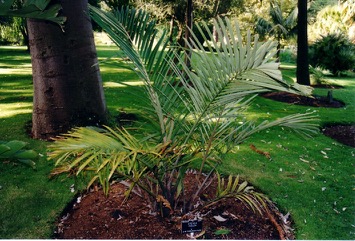
It will grow from tropical to warm temperate locations. It grows up to 1,600 m above sea level. It will grow in most soils. It needs a protected position. It is damaged by frost or drought. It can tolerate sun or shade. It suits hardiness zones 9-12. Geelong Botanical Gardens. Melbourne Botanical gardens hothouse. Brisbane Botanical Gardens. In XTBG Yunnan. In Townsville palmetum.
Also known as:
Palem aren mini
Edible Portion
- Cabbage, Starch, Sap, Palm heart
Where does Dwarf sugar Palm grow?
Found in: Asia, Australia, China, Hainan, Indonesia, Japan, Mexico, North America, SE Asia, Taiwan, United States
Notes: There are 17-20 Arenga species.
Growing Dwarf sugar Palm, Formosan Sugar Palm, Taiwan arenga
Cultivation: Plants are grown from seed. The seed germinate erratically taking either weeks or months. It is best to soak the seed for 3-5 days. It can also be improved by filing the mesocarp near the point of the hylum. It can be grown from suckers.
Edible Uses: The pith of the stem is used to extract starch. The sap from the flowering stalk is sweet and made into sugar. The young leaves and buds are eaten.
Production: Plants grow slowly.
Nutrition Info
per 100g edible portion| Edible Part | Energy (kcal) | Protein (g) | Iron (mg) | Vitamin A (ug) | Vitamin c (mg) | Zinc (mg) | % Water |
|---|---|---|---|---|---|---|---|
| Pith starch | - | - | - | - | - | - | |
| Sap | - | - | - | - | - | - | |
| Palm heart | - | - | - | - | - | - |
Dwarf sugar Palm, Formosan Sugar Palm, Taiwan arenga Photos

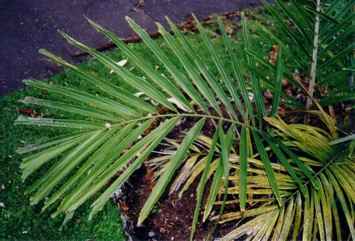
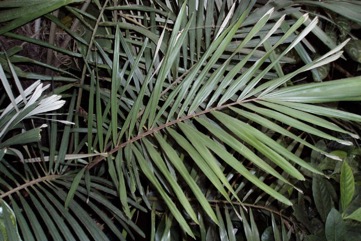
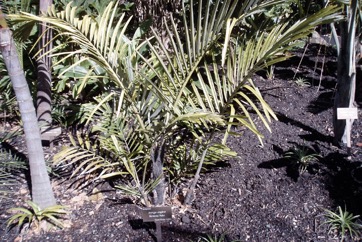
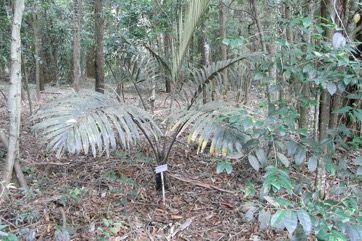
References
Balick, M.J. and Beck, H.T., (Ed.), 1990, Useful palms of the World. A Synoptic Bibliography. Colombia p 210
Blomberry, A. & Rodd, T., 1982, Palms. An informative practical guide. Angus & Robertson. p 55
Bodkin, F., 1991, Encyclopedia Botanica. Cornstalk publishing, p 99
Cundall, P., (ed.), 2004, Gardening Australia: flora: the gardener's bible. ABC Books. p 181
Etherington, K., & Imwold, D., (Eds), 2001, Botanica's Trees & Shrubs. The illustrated A-Z of over 8500 trees and shrubs. Random House, Australia. p 104
Facciola, S., 1998, Cornucopia 2: a Source Book of Edible Plants. Kampong Publications, p 26
Gibbons, M., 1993, Palms. Compact study Guide and Identifier. Sandstone. p 19
Gibbons, M., 2003, A pocket guide to Palms. Chartwell Books. p 38
Hibbert, M., 2002, The Aussie Plant Finder 2002, Florilegium. p 32
Jones, D.L., 1994, Palms throughout the World. Smithtonian Institution, Washington. p 132
Jones, D.L., 2000, Palms of Australia 3rd edition. Reed/New Holland. p 118
Kuo, W. H. J., (Ed.) Taiwan's Ethnobotanical Database (1900-2000), http://tk.agron.ntu.edu.tw/ethnobot/DB1.htm
Malesia 3:184. 1889
Martin, F.W. & Ruberte, R.M., 1979, Edible Leaves of the Tropics. Antillian College Press, Mayaguez, Puerto Rico. p 209
Reis, S. V. and Lipp, F. L., 1982, New Plant Sources for Drugs and Foods from the New York Botanical Garden herbarium. Harvard. p 17
Riffle, R.L. & Craft, P., 2003, An Encyclopedia of Cultivated Palms. Timber Press. p 258
Sukarya, D. G., (Ed.) 2013, 3,500 Plant Species of the Botanic Gardens of Indonesia. LIPI p 752
Terra, G.J.A., 1973, Tropical Vegetables. Communication 54e Royal Tropical Institute, Amsterdam, p 25
USDA, ARS, National Genetic Resources Program. Germplasm Resources Information Network - (GRIN). [Online Database] National Germplasm Resources Laboratory, Beltsville, Maryland. Available: www.ars-grin.gov/cgi-bin/npgs/html/econ.pl (10 April 2000)
World Checklist of Useful Plant Species 2020. Royal Botanic Gardens, Kew